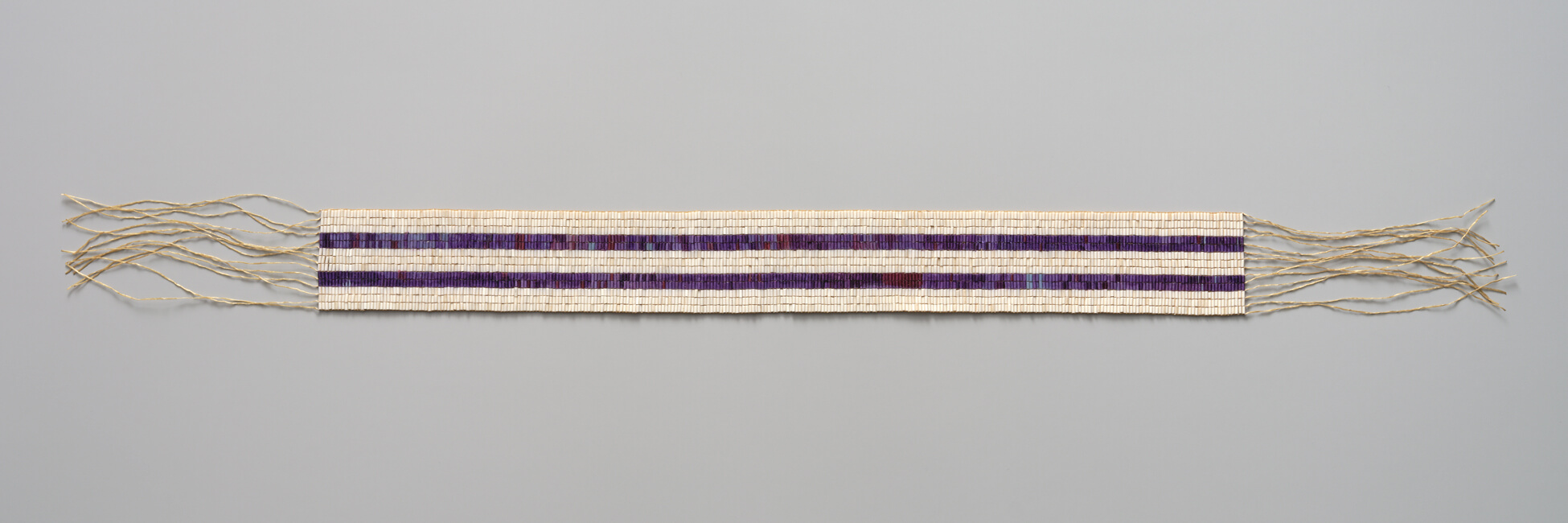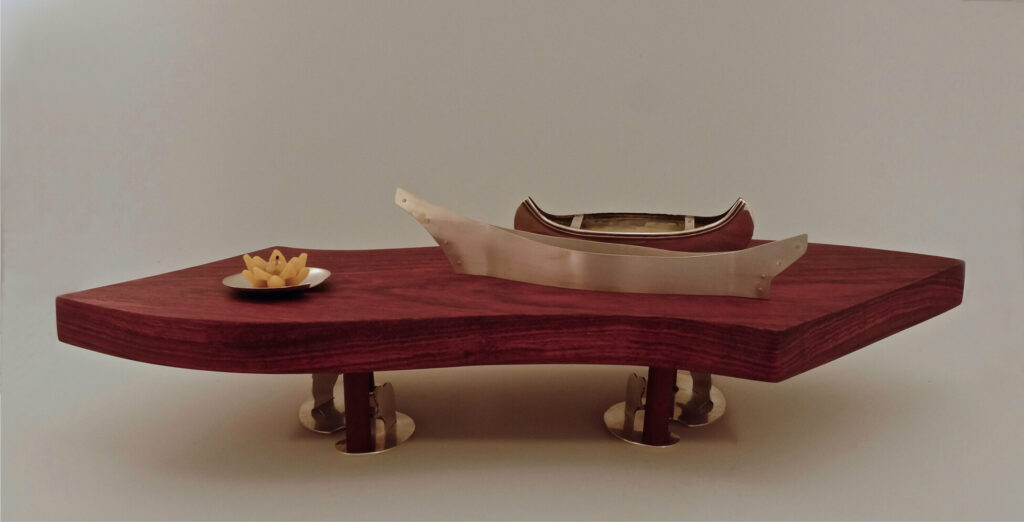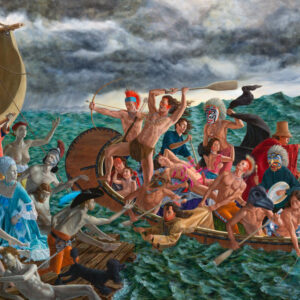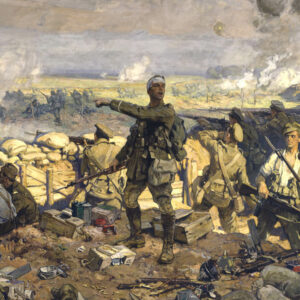Two Row Wampum Belt 1613

Two Row Wampum Belt, 1613, 1993 (reproduction by Jacob Ezra Thomas)
Plastic imitation shell and sinew
Woodland Cultural Centre, Brantford
The 1613 Teioháte Kaswenta (Two Row Wampum Belt) records the first non-paper agreement between Europeans and Indigenous peoples, specifically the Dutch and the Haudenosaunee, on Turtle Island, which includes Canada. It is considered a living treaty, and its alternating rows of purple and white shell beads represent the two parties to the treaty moving forward together in parallel, but never merging, signifying respect for each other’s rights. Of the five rows, the first of three white ones denotes peace, the second, friendship, and the third, perpetuity. One of the two purple rows symbolizes European leaders, government, and religion in a sailboat, while the second purple row signifies a canoe conveying Indigenous leaders, their government, and their way of life.

The creation of wampum beads from shells was originally the laborious work of women. The introduction of European metal tools revolutionized production and use expanded as colonists recognized wampum’s value as a means of exchange between nations. Wampum recorded other important agreements, such as the 1701 Dish with One Spoon Treaty between the Haudenosaunee and the Anishinaabe peoples. Scholars believe this form of Indigenous law originated nearly one thousand years ago.
The original Teioháte Kaswenta exists only in memory and reproduction but the philosophy underlining its original creation continues to inform Indigenous-settler relations and art. In Mary Anne Barkhouse’s (b.1961) small silver sculpture, Dark Water, Safe Harbour, 2018, two silver canoes reflective of eastern Canadian and Northwest Coast Indigenous design float in parallel. Silver beaver silhouettes support the base. The arrangement of the component parts is designed to evoke the Two Row Wampum Treaty and the ongoing work of women sculptors in documenting the evolving landscape in Canada. Dark Water, Safe Harbour is part of a fifteen-piece installation entitled Illuminations, which sheds light on the contributions of Canadian women to Canada’s cultural history. A member of the Nimpkish band, Kwakiutl First Nation, Barkhouse, a sculptor and metalsmith, has exhibited widely across Canada and the United States, and her work is in many public and private collections in Canada.

 About the Author
About the Author
 More Online Art Books
More Online Art Books
 Acknowledgements
Acknowledgements